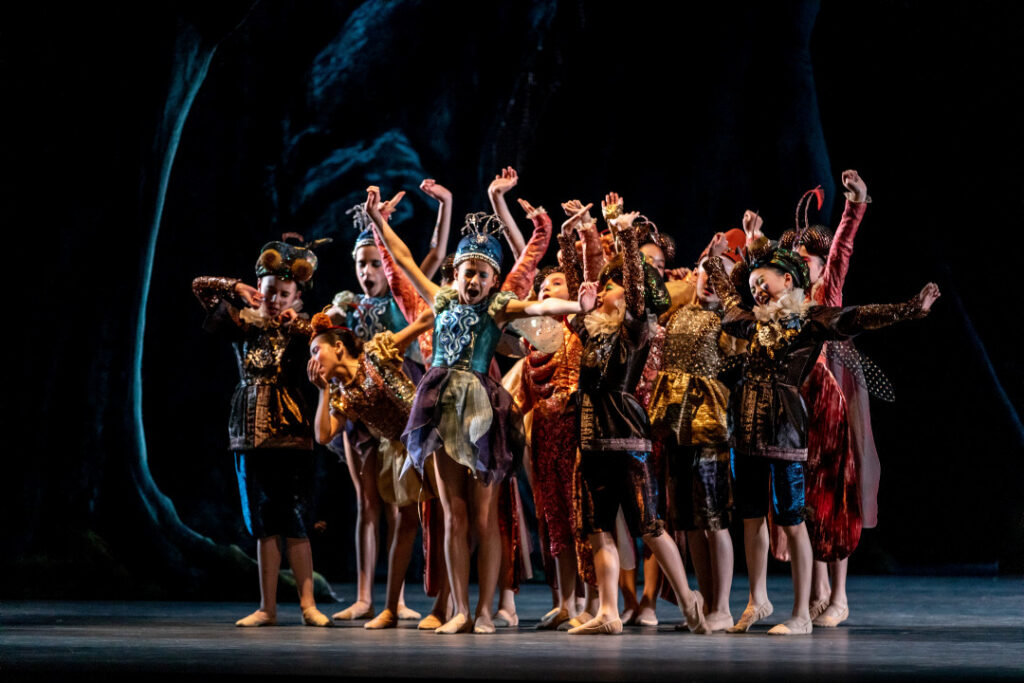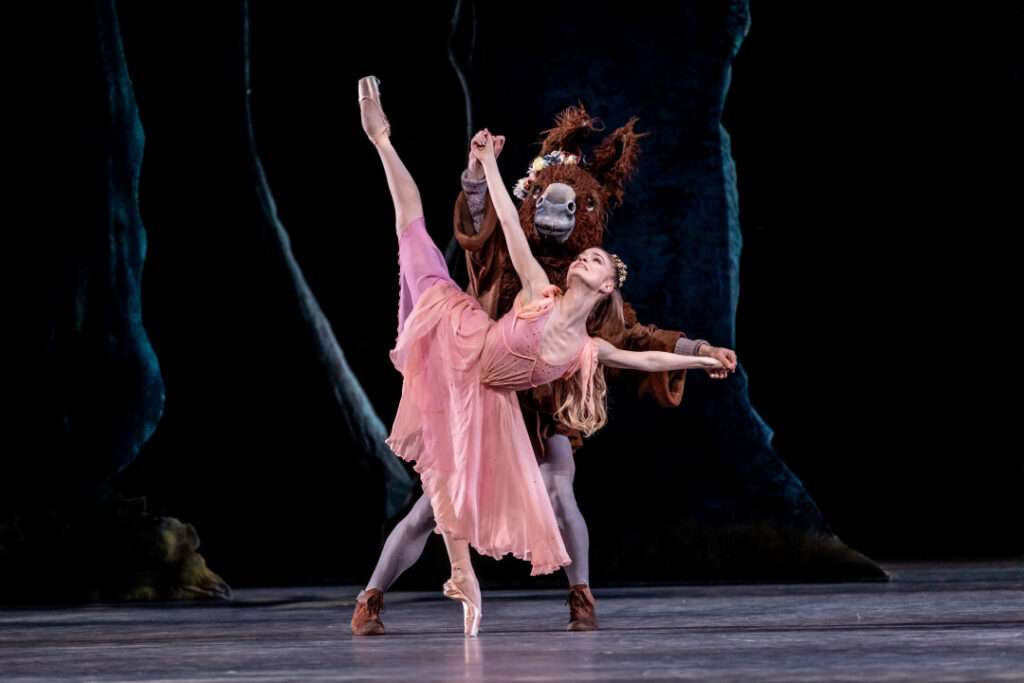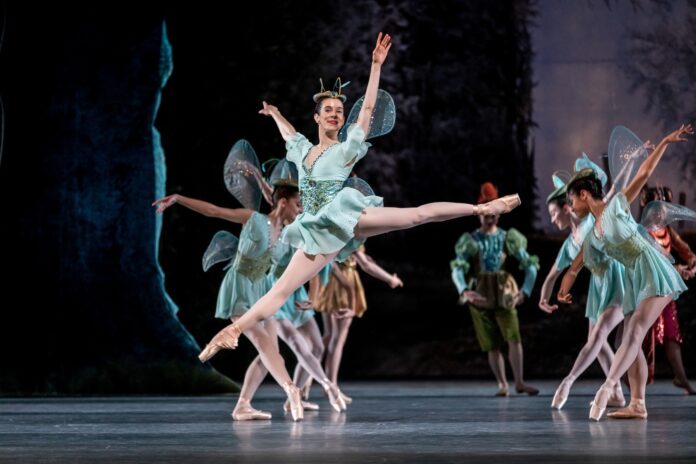A funny thing happened during SF Ballet’s opening night of A Midsummer Night’s Dream (through March 23 at the War Memorial Opera House): quite a few people thought the intermission was the ending. In fact, I’m pretty sure a few folks didn’t return from the intermission. After all, the first-half had the cast take their bows after 70 lovely minutes of Balanchine-choreographed beauty, so one would be forgiven for thinking it’s time to go home.
Not only that, but the ballet, set to the classic score by Felix Mendelssohn, is plot-heavy in the front, not the back. Anyone familiar with the Shakespearean rom-com (which is currently getting a traditional-ish production via Shotgun Players) will instantly recognize all the characters and plot points: the fairy king and queen, the mischievous imp, the loving young couple, the other couple in pursuit of the first, the flowers, the mix-ups, the donkey head, the hijinks, the resolution. All of this happens in the first-half.
The only things that aren’t in the first half are the wedding (which starts off Act Two with Mendelssohn’s now-standard “Wedding March”) and the reception performance by Bottom and his fellow players (which is excised altogether). When so many people know the same story, they tend take their cues from the scripts in their heads.

Of course, familiarity with Midsummer is no reason to dismiss it. As with all revived classics, one of the most important questions is what can be added to it, if need be, or how can one put their personal stamp on it. For this production, that answer first comes in the form of costume work by world-renowned designer Christian Lacroix. The 5th Avenue superstar clearly had fun crafting threads that both catch the eye and help advance the story.
He puts young couple Hermia and Lysander (Katherine Barkman and Myles Thatcher, respectively) in soft blues, whilst their counterparts Helena and Demetrius (Elizabeth Mateer and Steven Morse) are both adorned in deep reds. Oberon (Esteban Hernández) is decked out in gold, befitting his high opinion of himself, while Titania (Sasha de Sola) is adorned in cotton candy-pink. Lacroix also designed the sets, which have a layered feeling that makes them seem like pages of a child’s pop-up book. All of them lovely to look at.
Then, of course, there are the dancers themselves. Much like fellow Ballet member Ricardo Bustamante, Esteban Hernández has a habit of stealing scenes through a pure electric energy that’s palpable even from the audience seats. He’s well-matched with Sasha de Sola’s Titania (a role one could imagine the recently-retired Sarah van Patten taking on). Through a number of gravity-defying pirouettes, de Sola’s Titania is less concerned with matching egos with her husband so much as being the affectionate Earth-mother to the many fairies and wood sprites played by the Ballet’s youngest members. Through flexibility and grace, she commands every scene she’s in—which says a lot when your most notable co-star is a man with a donkey’s head.
(And no, I haven’t overlooked Alexis Francisco Valdes as Bottom. Under Sandra Jennings’ direction, Valdes gets some of the best visual sight gags: turning to the audience as he tries to wrap his now-donkey-head around Titania’s affections; and later when she leads him in on what can only be called a “flowery BDSM leash.”)

Also comforting is the feeling of safety one has, even when they’re one-of-the-few masked patrons in attendance. Surrounded as I was by bare faces (one of the reasons I always sit on the aisle), I continue to be amazed by the effectiveness of the War Memorial’s HVAC system—both the century-old “mushroom” vents under the seats (installed after the 1918 Influenza pandemic) and the state-of-the-art system they now have. Over the course of the two-hour show, my Aranet4’s CO² readings never got any higher than 633ppm, and that was with a packed house, minus the few who disappeared during intermission.
As is typical at an SF Ballet performance, the mid-lobby table was decorated to be a photo-op on-theme with the production. This time saw a colorful wood-like set up, with a few ushers selling Spanish-made flower crowns. Before the show, there were a few parents taking photos of kids in complicated ballet poses in front of the set up. I asked one of parents if the kids were part of the Ballet’s youth corps; they told me that they weren’t, simply that the kids are ballet students from a different school.
That’s why a frequent story like Midsummer continues to be performed: Centuries after its first production, it never gets old. The kids who watched it that night probably imagine themselves one day gracing the War Memorial stage in similarly-decadent costumes (I imagine Lacroix’s designs would be expensive to license). Shakespeare wrote his piece to be an escapist fantasy. At just over two hours, SF Ballet’s lavish production flies by as nimbly its dancers leap across the stage. With Spring now upon us, there are few better ways to ring in the sunny season.
Just remember to stay for both acts.
A MIDSUMMER NIGHT’S DREAM runs through March 23 at the War Memorial Opera House, SF. Tickets and further info here.






